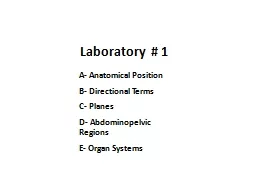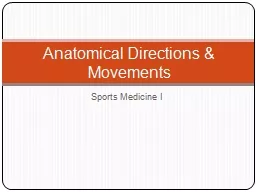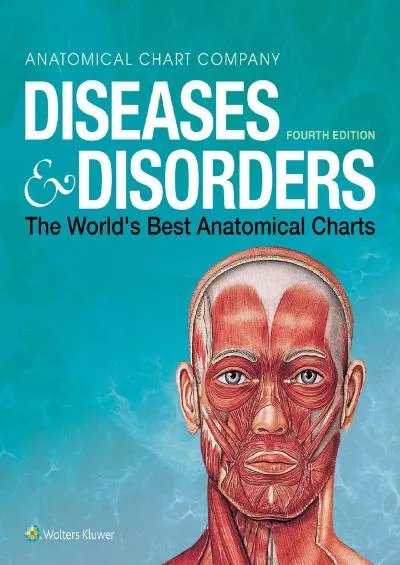PPT-A- Anatomical Position
Author : min-jolicoeur | Published Date : 2017-08-11
B Directional Terms C Planes D Abdominopelvic Regions E Organ Systems Laboratory 1 Hands at the side and palms facing forward Standing standing at attention
Presentation Embed Code
Download Presentation
Download Presentation The PPT/PDF document "A- Anatomical Position" is the property of its rightful owner. Permission is granted to download and print the materials on this website for personal, non-commercial use only, and to display it on your personal computer provided you do not modify the materials and that you retain all copyright notices contained in the materials. By downloading content from our website, you accept the terms of this agreement.
A- Anatomical Position: Transcript
Download Rules Of Document
"A- Anatomical Position"The content belongs to its owner. You may download and print it for personal use, without modification, and keep all copyright notices. By downloading, you agree to these terms.
Related Documents






![[EPUB] - Diseases & Disorders: The World\'s Best Anatomical Charts (The World\'s Best](https://thumbs.docslides.com/902636/epub-diseases-disorders-the-world-s-best-anatomical-charts-the-world-s-best-anatomical-chart-series.jpg)
![[READ] - Diseases & Disorders: The World\'s Best Anatomical Charts (The World\'s Best](https://thumbs.docslides.com/905549/read-diseases-disorders-the-world-s-best-anatomical-charts-the-world-s-best-anatomical-chart-series.jpg)






